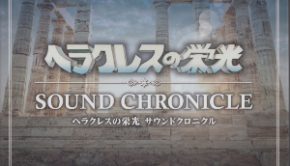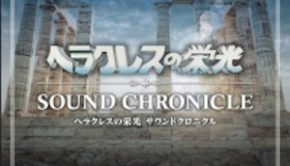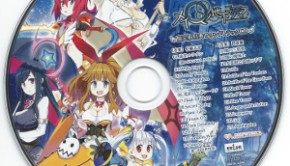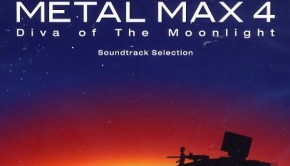Metal Music Maniax
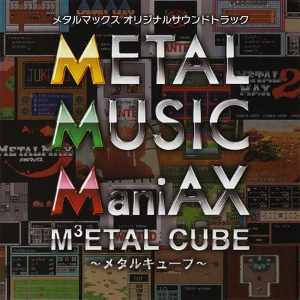 |
Album Title: Metal Music Maniax -Metal Cube- |
| Record Label: Enterbrain |
|
| Catalog No.: N/A |
|
| Release Date: July 29, 2010 |
|
| Purchase: Buy Used Copy |
Overview
In 1991, developer Crea-Tech and publisher Data East released the RPG Metal Max for the Famicom (aka NES). While its visuals and gameplay resembled most other RPGs released back in the day, Metal Max set itself apart with its post-apocalyptic setting, open world, and vehicle system. The soundtrack for the title was handled by Satoshi Kadokura, a respected pop producer and anime composer known for his work on Mashin Hero Wataru, Windaria, and Mobile Suit Gundam F91. Two years later, he returned to score the Super Famicom (aka SNES) sequel Metal Max 2. Following a huge hiatus, the series was revived in 2010 with the DS’ Metal Max 3, complete with a new score from Kadokura. The limited edition of the game was packaged with Metal Music Maniax, a surprisingly expansive album featuring the hitherto-unreleased scores for the series’ first two games, as well as eight tracks from the third game.
Body
Finally released some 19 years after the game, how does Metal Max‘s soundtrack stack up? For the most part, Kadokura was able to adapt his expressive compositional style to accommodate the limited tones and channels of the NES’ sound chip, with the help of Data East’s sound programmers (among them Shogo Sakai). This is evident right from the surprisingly nuanced title theme, now known as the series’ main theme: Kadokura sets the tone for the post-apocalyptic title with deep bass lines and suspended melodies. However, during the quite extensive development, he also captures some hope with some warmer arpeggiations. Sensitively handled and technologically commanded, this track is an impressive feat. Some of these influences carry forth into the exploration themes of the title: “Metallic Shaker” captures plodding through the wastelands with its heavy bass and irregular rhythms, while “Abandoned Factory” disorientates listeners with its jagged, sprawling development.
But despite such compositions, this is a fairly typical light-hearted RPG soundtrack at its heart. Tracks such as “Winning! Buying! Driving!” and “To an Unknown Wilderness” capture a sense of adventure with their happy-go-lucky melodies, while “Tank Bang Bang” captures the fun of travelling on vehicles with its metred guitar riffs. Fan favourite “Caterpillar Tracks”, on the other hand, soothes listeners with its mellow synths and flowing melodies. RPG clichés abound with everything from the regal “Caravan” to funereal “Annihilation” and slapstick “Animal Parade”. While perfectly effective in context, these tracks are too generic and repetitive to leave a lasting impression. Likewise, tracks such as “Howl – In the Indelible Past” and “Let’s Meet Dr. Mince” initially appeal thanks to their catchy hooks, but can sometimes grate due to their repetitious nature.
The normal and boss battle themes, on the hand, have a strong rock influence and are surprisingly reminiscent of Final Fantasy Mystic Quest. “Battle with the Wanted” has gone on to become a staple of the series for good reason. It’s really impressive how Kadokura managed to articulate the energy of this theme with the NES, though its later incarnations are even better. Following a series of fanfares, the soundtrack closes on a positive note with a punchy final battle theme and a suitably bittersweet ending theme. Wrapping up at 35 minutes, Metal Max features a particularly substantial NES soundtrack in both depth and breadth. While a little too conservative to surpass the heavyweights in the genre, it certainly has enough highlights to be an enjoyable listen and sets the bar high for the rest of the franchise.
The soundtrack for Metal Max 2, featured on the second disc, largely builds on the basis of the original in an unambitious manner. The title theme is a note-for-note rehash of Metal Max‘s, for example, though it still sounds good because of its enhanced synth; by emphasizing the contrast between the treble synthpads and slapped bass, Kadokura captures the imagery of a desperate protagonist in a ruined world. As the soundtrack proceeds, plenty of the scene themes from the original game return, among them the jazzy “Tank Vodka”, humorous “Let’s Meet Dr. Mince”, rocking “Battle with the Wanted”, and numerous fanfares. While it was a good idea to reprise some fan favourites, it’s a pity that Kadokura elected to simply resynth rather than arrange them. This approach means the tracks are boring to listen to on a stand-alone basis and poorly integrated in context. Even the original game’s most emotional themes, “Theme of Love” and “Unforgettable Person”, are anonymous rehashes here.
Between the soundtrack’s rehashes and jingles, there is surprisingly little all-new material on Metal Max 2. The most interesting tracks separate themselves from the adventurous tones of Metal Max and venture into more dramatic territory. This is evident early on with “Rain Valley”. No longer restricted to the NES’ three channels, Kadokura is able to create a fully-fledged sound in which the striking primary and secondary melodies are propelled above string arpeggiations. Even better is “Scrap Town”, which paints a tragic scene with its rich phrasing and soft orchestration. Were this a town theme composed for a Final Fantasy title, no doubt it would be getting performed at concerts to this present day. “Wanderer’s Song” meanwhile has gone on to become the soundtrack’s most famous theme, a hauntingly beautiful track both in the game and on the album.
The rest of the Metal Max 2 soundtrack basically follows RPG tradition. Expect everything from thrashing guitar leads on the normal battle theme, to suspended orchestral chords for the crisis track, to chugging rock riffs for the tank theme. Yet as predictable as these themes are, they’re still fairly fitting and enjoyable. There are a few other tracks with some artistic merit. For example, “Dungeon” is surprisingly effective for the way it shifts between ethereal synth suspensions and intense orchestral sections. In a rare example of a fully-fledged arrangement, “Caravan” proves a step above the original with its folksy stylings. Less enjoyable are tracks such as “Taming the Shrew”, a gimmicky homage to Offenbach, or “Call”, which is nothing but 50 seconds of snare rolls. Thankfully, the soundtrack’s final few themes are stellar. “Bias City” and “Bias Brad” capture all the tones one would expect from final area and battle themes, but are also quite ambitious in their prog rock stylings, while the ending and staff roll themes will inspire a lot of emotions during their five minute playtimes.
Moving to the third disc of the soundtrack, listeners are given eight tracks from the soundtrack for 2010’s Metal Max 3. Given the game was produced for DS’ consoles, the scores aren’t much more elaborate than those of the original games and the synth isn’t much of a step-up either. This is evident from the second track, yet another rendition of the series’ main theme. While the track sounds heavier than ever with its meaty guitar riffs and cymbal crashes, it loses some of the ethereal quality of the original. Furthermore, while the samples sound more realistic than the NES and SNES versions, they also sound quite thin and muffled due to the hardware limitations of the DS. The album also features the full-length vocal and instrumental versions of the game’s vocal theme “Inheritor of the Flame”. While a substantial bonus, it isn’t necessarily a good one, suffering from trashy J-rock stylings, a generic chorus, and a weak vocalist. The superior other vocal theme, “REBORN -Let’s Meet Dr. Mince-“, is omitted from this bonus album.
The original material on offer on Metal Max 3 tends to hit-and-miss. On one hand, Kadokura provides listeners with the memorable, punchy battle theme “Hell Is Full”. Simultaneously paying homage to the series’ roots while introducing a blues sound to the series, the track manages to be familiar yet fresh all at once. On the other hand, Kadokura disappoints with “Angel’s Whereabouts”, a bland and tacky synthpop track that wouldn’t sound out of place in a 90s dating sim, and “Let’s Meet Dr. Mince”, a pathetically clichéd Asian arrangement of the familiar theme. The boss theme “Old Enemy” has its moments, but feels too underdeveloped to fully satisfy, looping just as it gets start. “Echoes of Unknown” is significantly more impressive with its electronic stylings, but is another track that is let down by the heavy-handed implementation of the soundtrack on to the DS.
Summary
Enterbrain provided an incredible fan service when they packaged Metal Music Maniax into the limited edition of Metal Max 3. Priced at 8000 JPY, the package offered plenty of value for money by providing the complete scores for two much-loved classic titles, as well as a sampler for the latest game in the series. However, the quality of the series’ scores does significantly drift between the entries. While Metal Max‘s soundtrack was an ambitious spectacle for its time, its sequel’s score followed the original game’s score and RPG formula in general too closely. The sampler provided of Metal Max 3 is even less impressive. But while the series doesn’t feature the upper echelon of game music, Satoshi Kadokura does provide listeners with plenty of highlights along the way. This album is a must-have for anyone wanting to explore the music of this little-known series of RPGs.
Do you agree with the review and score? Let us know in the comments below!
3.5
Posted on December 2, 2015 by Chris Greening. Last modified on December 5, 2015.

